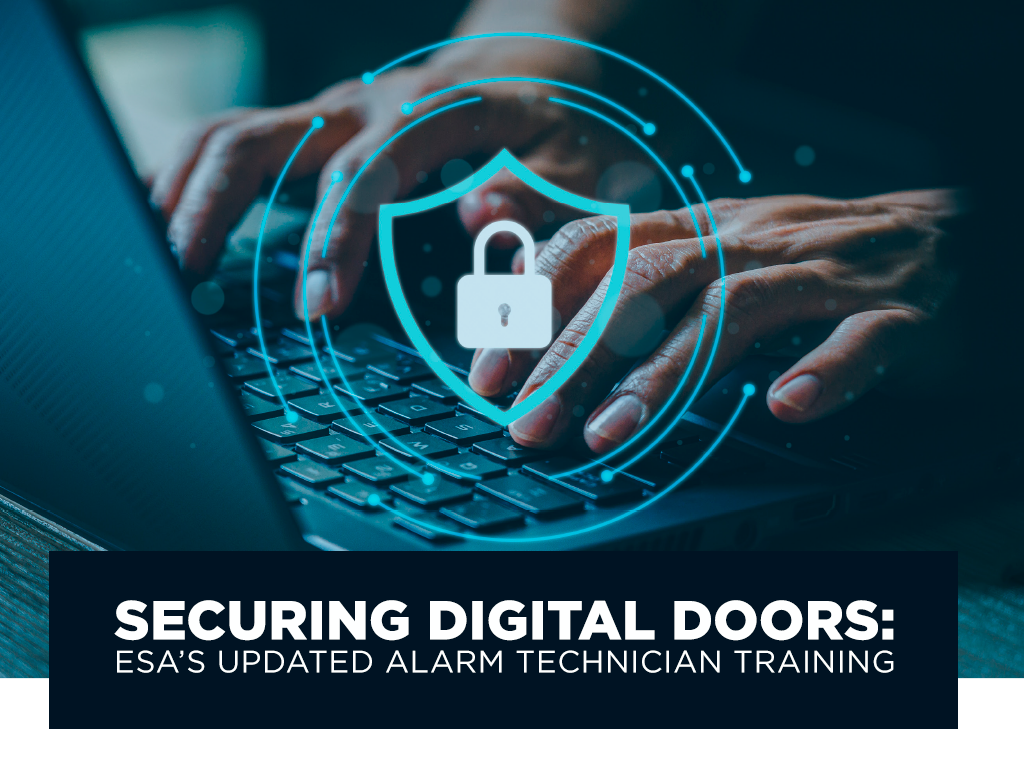Securing Digital Doors: ESA’s Updated Alarm Technician Training

In today’s digital age, cybersecurity threats are more prevalent than ever. Technicians in the field, who play a vital role in maintaining and protecting an organization’s physical and digital security infrastructure, must have a solid understanding of best practices and vulnerabilities to be effective stewards for customers.
While field technicians primarily focus on physical systems (i.e. video, access control, intrusion and fire hardware) the increasing convergence of physical and digital security means that basic cybersecurity knowledge is essential.
ESA Integrates Cybersecurity into Upcoming CAT 1 Revamp
Knowing this, ESA is integrating cybersecurity basic training into its industry-standard Level 1 technician training. ESA’s Level 1 certification is a crucial credential for security technicians, ensuring they possess the foundational knowledge and skills needed to perform their roles effectively — and is widely recognized across the security industry as the baseline qualification for alarm technicians.
Just as security technology advances, so do the cyber threats targeting these systems. And by incorporating NEW cybersecurity modules into the Certified Alarm Technician Level 1training, ESA is working to ensure that security technicians receive comprehensive education on securing networked security devices, understanding cyber threats, and implementing best practices.
Modern security systems, including surveillance cameras and access control systems, are often connected to networks and the internet. Without proper cybersecurity measures, these systems can become entry points for hackers.
Securing the Digital Doors
ESA’s updated training will equip security technicians with essential cybersecurity best practices, such as changing default passwords, updating firmware, and implementing encryption to safeguard networked security devices. Cybercriminals exploit vulnerabilities in poorly secured systems to launch malware infections, ransomware attacks, and data breaches. Technicians trained in cybersecurity can identify weak points and mitigate risks before they are exploited, strengthening overall system security and enhancing the value ESA Member companies provide to their customers.
Since security technicians often handle sensitive data—such as security logs, access credentials, and surveillance footage—understanding encryption, secure storage, and access controls is critical for preventing unauthorized access and data leaks. Proper training instills a security-first mindset, ensuring strong protective measures are implemented from the start.
Cybersecurity knowledge is no longer optional—it’s essential. By integrating cyber awareness into Level 1 and advanced certifications, ESA ensures technicians are prepared to protect networked security systems, prevent cyber threats, and enhance incident response. In today’s evolving threat landscape, investing in cybersecurity training is a necessary step toward securing both digital and physical assets.
This is just one more way ESA is equipping its members to defend against evolving security challenges.
The NEW Certified Alarm Technician Level 1 training will be released later this year.




